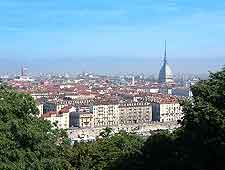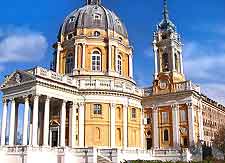Turin Neighbourhoods, Locations and Districts
(Turin, Piedmont, Italy)

A glance at a map of Turin's districts is all that's needed to show that the city is laid out according to a very regular grid street plan. A leftover from the days when Romans started building a settlement here, this does make Turin relatively easy to get around.
Turin is divided into 23 quarters within 10 municipal districts, where there are also many further neighbourhoods and locations of interest. Most of Turin's main attractions can be found within a few central districts, in the hills outside the city and in the newly renovated neighbourhood of Lingotto.
Il Quadrilatero District
Situated north-west of Piazza Castello, this is the oldest of Turin's districts and was once the site of the region's oldest Roman settlement. Today, this neighbourhood is packed full of restaurants and, therefore, a good place to head if you're looking for lively atmosphere in the evening.

La Collina District
The wealthy hillside residential district of La Collina is notable because of its vast green spaces, interspersed by some fine museums and monuments. These include the Basilica di Superga, amongst others.
Centro Citta District
From the 16th century, central Turin extended beyond its Roman and medieval confines to become the centre of the ancient capital of the Savoy kingdom. Today, this district still lies at the heart of Turin and includes some of the city's best shopping streets, such as Via Po, Via Roma and Piazza San Carlo. Likewise, many of the main museums and tourist attractions can be found here.
San Salvario District
This central neighbourhood extends from Porta Nuova across to the Parco del Valentino, on the banks of the River Po. This multicultural area has acquired something of an unfortunate reputation in recent years.
Lingotto District
This district of Turin is famous for the Fiat car factory which bears the same name. Since the closure of the factory in the 1980s, this area has turned its attention from industry to leisure. The neighbourhood is now home to a vast modern multi-complex.
 A glance at a map of Turin's districts is all that's needed to show that the city is laid out according to a very regular grid street plan. A leftover from the days when Romans started building a settlement here, this does make Turin relatively easy to get around.
A glance at a map of Turin's districts is all that's needed to show that the city is laid out according to a very regular grid street plan. A leftover from the days when Romans started building a settlement here, this does make Turin relatively easy to get around.